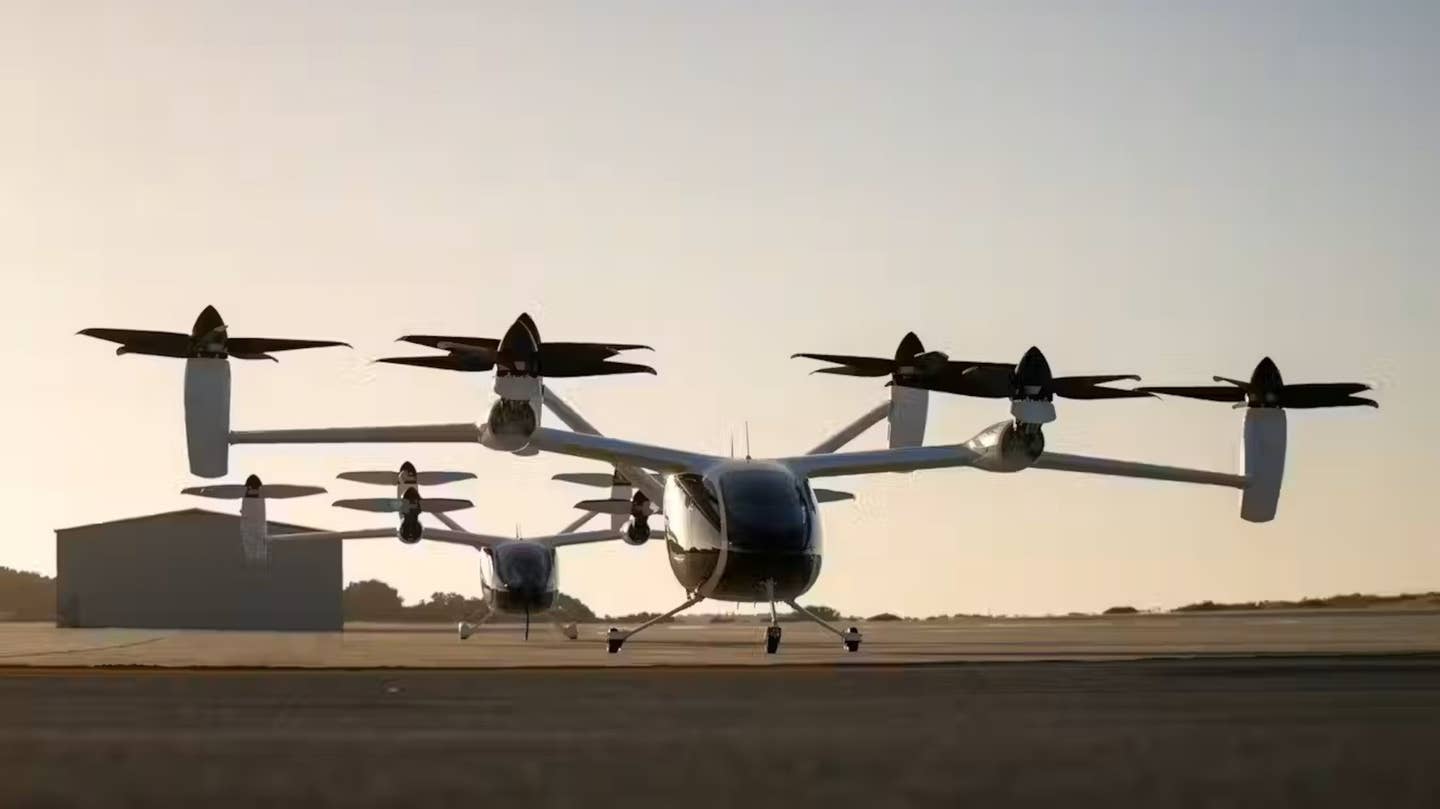FAA, EASA Release New Certification Criteria for Air Taxis
The proposed standards represent a major milestone in the certification of electric vertical takeoff and landing (eVOL) air taxis and other novel designs.

New provisions from the FAA and EASA are intended to streamline the certification of advanced air mobility (AAM) aircraft, such as Joby Aviation’s air taxi. [Courtesy: Joby Aviation]
The FAA and European Union Aviation Safety Agency (EASA) on Monday made major strides toward establishing a certification pathway for advanced air mobility (AAM) aircraft, such as electric vertical takeoff and landing (eVTOL) air taxis.
The FAA—which so far has published final airworthiness criteria for two air taxi designs, Archer Aviation’s Midnight and Joby Aviation’s flagship model—issued an advisory circular (AC) that would create the foundation for certification of powered lift vehicles, such as eVTOL aircraft. The AC, which lays out acceptable means for showing compliance with FAA Part 21 requirements for special class aircraft, is open for comment for 60 days.
EASA, meanwhile, updated its special condition for vertical takeoff and landing aircraft (SC-VTOL) rules to incorporate new requirements agreed upon with the FAA, covering safe flight and landing, handling qualities, and single-point failures.
Simultaneously, the regulators together revised Safety Emphasis Items (SEI) lists—which determine an agency’s level of involvement in aircraft validation projects—for parts 23, 27, and 29. According to the FAA, the partners have reduced SEI requirements and placed greater responsibility on the authority actually certifying the aircraft.
“The FAA and EASA have achieved a significant milestone on the path to certifying eVTOL aircraft,” the FAA said in a statement. “This also marks important progress in our effort to more closely align rulemaking and policy initiatives between the United States and the European Union. We’re committed to ensuring the safety of the flying public both at home and abroad.”
Both the FAA and EASA have announced ambitious initiatives designed to cement their respective AAM industries as the world’s biggest and best. But before tackling challenges such as eVTOL infrastructure, which will require a network of vertiports and electric chargers to support the aircraft, the regulators first need to define clear certification pathways for the novel designs.
The FAA’s new criteria, intended for powered lift designs with maximum weights of 12,500 pounds and a maximum capacity of six passengers, were developed using standards in FAA parts 23, 27, 33, and 35. The regulator said it leveraged its work on Archer and Joby’s type certification applications to develop the standards, claiming they will create a more efficient path to developing the certification bases for powered lift projects.
For example, the FAA will no longer need to publish airworthiness criteria in the federal register for public notice and comment, as it was required to do for Archer and Joby’s aircraft, for designs that use the standards in the AC. Applicants can now propose certification bases that draw from previously approved designs, such as Archer’s Midnight, or use equivalent level of safety findings to adopt existing airworthiness criteria for their own projects.
EASA, which had already published an initial set of standards for VTOL projects, made a few key changes in the second issue of its SC-VTOL criteria. Unlike the FAA AC, it will not be subject to public consultation.
The most notable change is an increase of the maximum certified takeoff mass (MCTOM) from 7,000 pounds to about 12,500 pounds, one of many examples of the regulator adjusting standards or wording to better align with the FAA AC.
Another key provision is the introduction of a requirement around electrical wiring interconnection systems (EWIS), which transmit data and signals across aircraft systems. Manufacturers will need to prove these can be operated without risk.
So far, China’s EHang is the only eVTOL manufacturer in the world to achieve type certification, awarded by China’s Civil Aviation Authority (CAAC) for the company’s EH216-S in October. Already, the manufacturer has completed commercial demonstration flights and begun mass production.
Things are moving a bit slower in the West, much to the chagrin of U.S. lawmakers and regulators, who don’t anticipate AAM operations at scale until 2028. It’s no secret that Western officials are wary of Chinese drones and electric vehicles, and the country’s growing AAM industry could be a threat to their dominance in that sphere as well.
Monday’s announcements should help accelerate the technology’s growth in the U.S. and Europe. In the coming months, expect the list of eVTOL companies with type certification bases to grow beyond Archer, Joby, and the handful of companies, among them Lilium and Volocopter, collaborating with EASA.
Like this story? We think you'll also like the Future of FLYING newsletter sent every Thursday afternoon. Sign up now.

Subscribe to Our Newsletter
Get the latest FLYING stories delivered directly to your inbox






